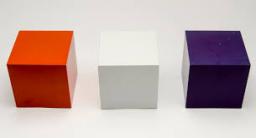Surface of cubes
Peter molded a cuboid of 2 cm, 4cm, and 9cm of plasticine. Then, the plasticine was split into two parts in a ratio of 1:8. From each piece, a cube was made. In what ratio are the surfaces of these cubes?
Final Answer:

Tips for related online calculators
You need to know the following knowledge to solve this word math problem:
algebrasolid geometrybasic operations and conceptsUnits of physical quantitiesGrade of the word problem
We encourage you to watch this tutorial video on this math problem: video1
Related math problems and questions:
- Plasticine ball
 Plasticine balls have a radius r1=77 cm, r2=98 mm, r3=9 cm, r4=81 cm, r5=5 cm, r6=74 mm, r7=49 mm, r8=43 mm, r9=26 mm, r10=2 cm. They are molded
Plasticine balls have a radius r1=77 cm, r2=98 mm, r3=9 cm, r4=81 cm, r5=5 cm, r6=74 mm, r7=49 mm, r8=43 mm, r9=26 mm, r10=2 cm. They are molded - Surfaces 3793
 The volumes of the two cubes are in the ratio of 27:8. What is the ratio of the surfaces of these cubes?
The volumes of the two cubes are in the ratio of 27:8. What is the ratio of the surfaces of these cubes? - Assembled 80750
 We assemble different bodies from five identical cubes. The volumes of all bodies are equal. Calculate the surfaces of the assembled bodies.
We assemble different bodies from five identical cubes. The volumes of all bodies are equal. Calculate the surfaces of the assembled bodies. - Centimeters 82756
 Let us have a cube whose edge length is expressed in centimeters and is a natural number. What is the smallest number of such identical cubes that can be made into a cuboid with dimensions of 24 cm, 32 cm, and 60 cm? How long will the edge of these cubes
Let us have a cube whose edge length is expressed in centimeters and is a natural number. What is the smallest number of such identical cubes that can be made into a cuboid with dimensions of 24 cm, 32 cm, and 60 cm? How long will the edge of these cubes - Triangles
 Hanka cut the 20 cm long straws into three pieces. Each piece had a length in cm. Then, with these three pieces, she tried to make a triangle. a) What circuit has each of the triangles? b) How long can the longest side measure? c) How many different trian
Hanka cut the 20 cm long straws into three pieces. Each piece had a length in cm. Then, with these three pieces, she tried to make a triangle. a) What circuit has each of the triangles? b) How long can the longest side measure? c) How many different trian - Cutting a cuboid
 A cuboid can be cut into 200 cubes, each with a volume of 8 dm cubic. Calculate how many cubes with a volume of 1 cm cubic can this cuboid be cut into without a remainder.
A cuboid can be cut into 200 cubes, each with a volume of 8 dm cubic. Calculate how many cubes with a volume of 1 cm cubic can this cuboid be cut into without a remainder. - Cubes
 Surfaces of cubes, one of which has an edge of 42 cm shorter than the other, differ by 16128 cm². Determine the length of the edges of these cubes.
Surfaces of cubes, one of which has an edge of 42 cm shorter than the other, differ by 16128 cm². Determine the length of the edges of these cubes.
